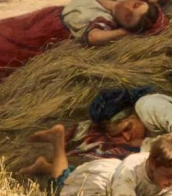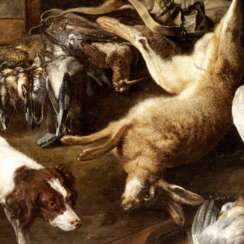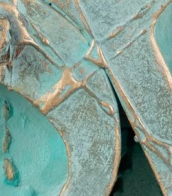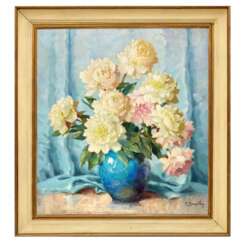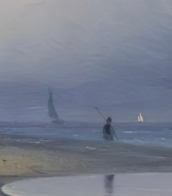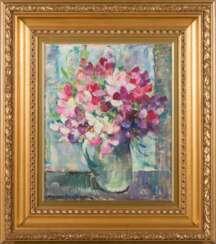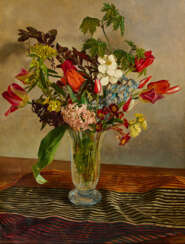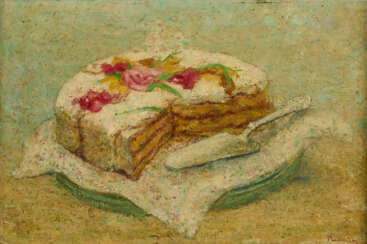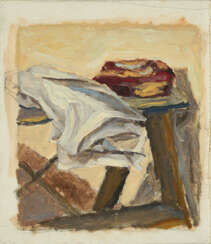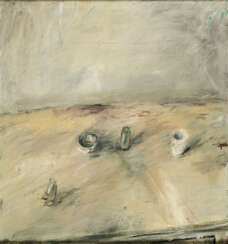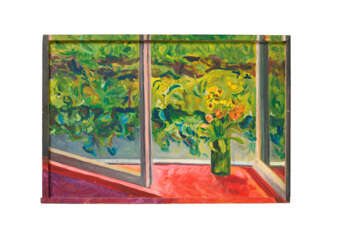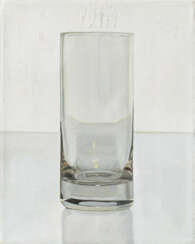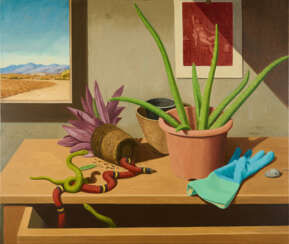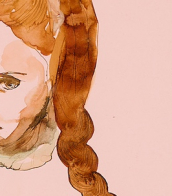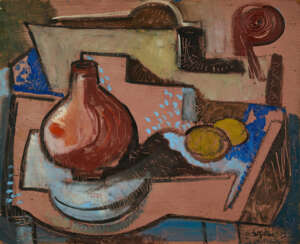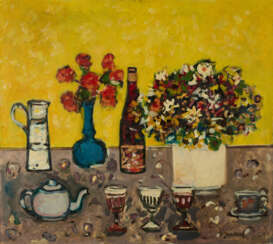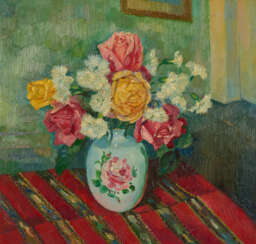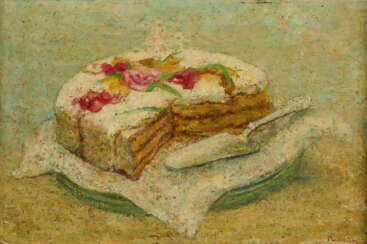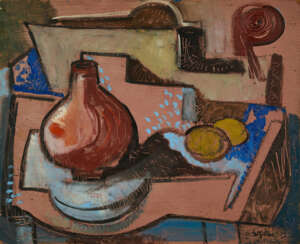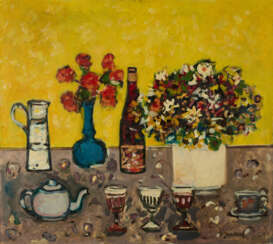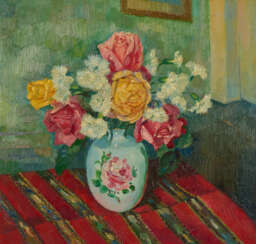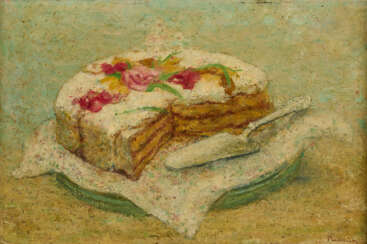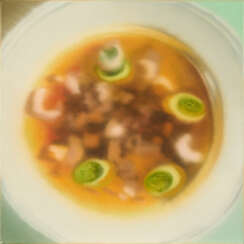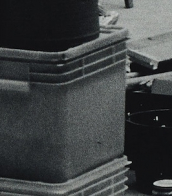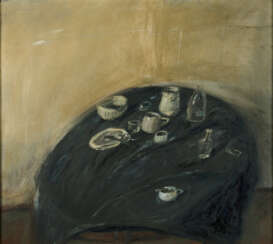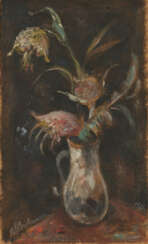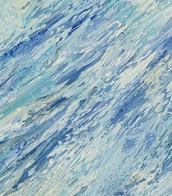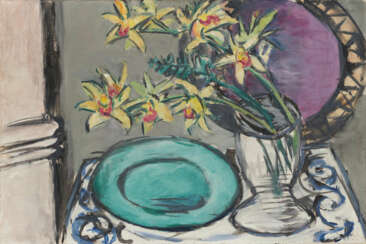картина маслом натюрморт
Robert Pudlich was a German graphic artist, painter, illustrator and set designer of the lost generation. His art was influenced by the New Objectivity. Pudlich belonged to the environment of the art dealer Johanna Ey. He was a member of the Rhenish Secession and the German Association of Artists. In 1936 he took part in the Nazi exhibition West Front in Essen. In 1937 his works were classified as degenerate art. After the Second World War, from 1947 Pudlich designed sets and costumes for productions by Gustaf Gründgens in Düsseldorf and Hamburg as well as for the Municipal Opera in Berlin. During this time he created a series of monumental murals, for example for the Düsseldorf Opera House. In 1955 he accepted a professorship at the Düsseldorf Art Academy.
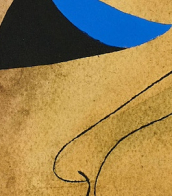

Peter Schmersal is a German painter who lives and works in his native city and in Berlin. His work is characterized by a stylistic variety. Schmersal studied graphic design in Wuppertal from 1971 to 1975 and then worked as a graphic designer. From 1978 he engaged in painting. In the mid-1980s, primarily still lifes, landscapes and architectural depictions were created. There is already a certain casualness to the motifs from this period, they appear in fleeting snapshots that are characterized by a fragmentary execution. The still lifes show classic subjects: flowers, fruits, dead animals and everyday objects such as bottles, serviettes, stools or tables. At the beginning of the 1990s, in addition to urban landscapes, there were above all examinations of the portrait, which is also often fragmented, not only from the front, but often also in an unusual top or bottom view, up to a physiognomic detail representation, for example the mouth and mouth eye area. Since the beginning of the millennium, the choice of motifs at Schmersal could hardly have been more heterogeneous. Due to the well-considered incoherence of individual motifs, Schmersal juxtaposes the most diverse types of authorship, style, genre and context of exploitation. In terms of motifs, there are still no self-imposed specific guidelines, but figures, still lifes and landscapes continue to dominate
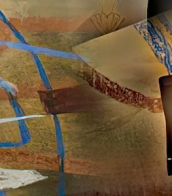
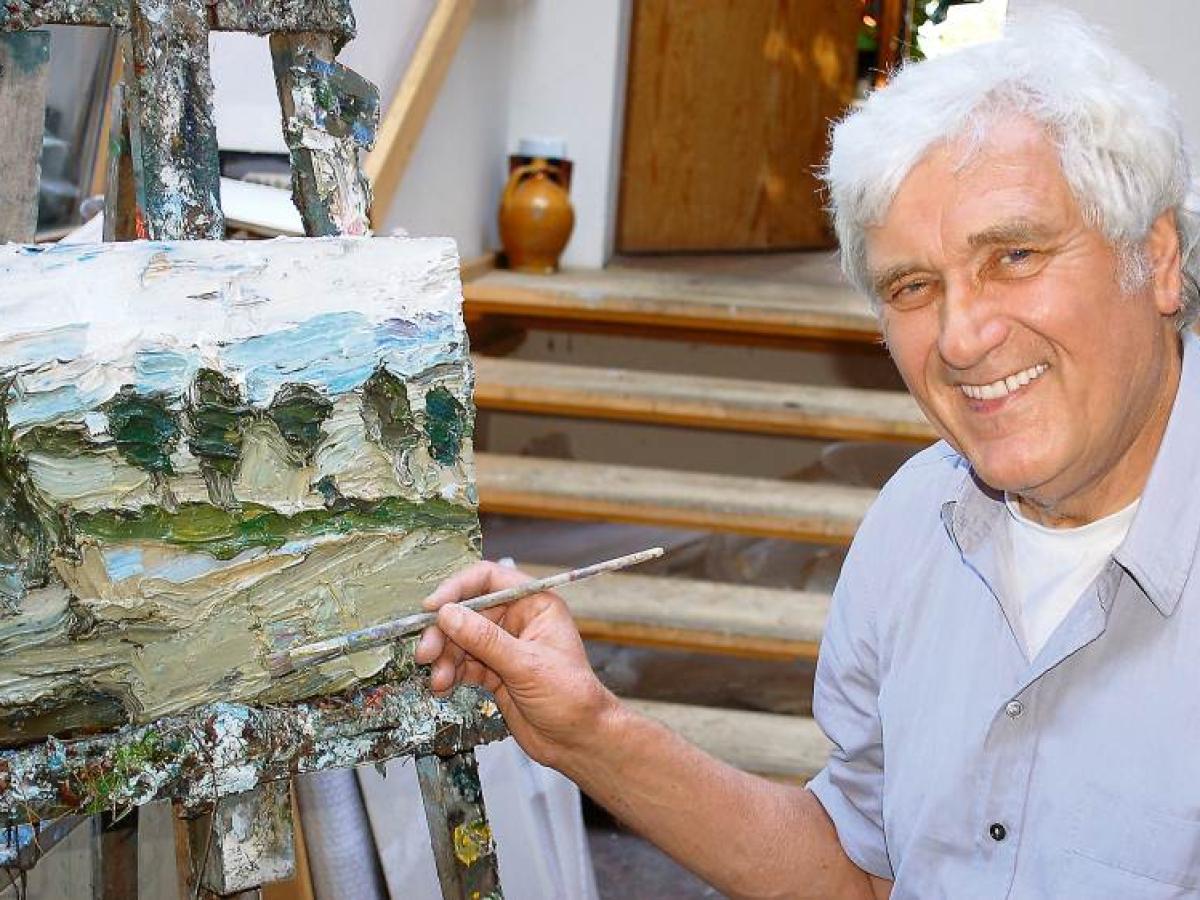
Klaus Fußmann is a contemporary German painter. He studied from 1957 to 1961 at the Folkwang University of the Arts in Essen and from 1962 to 1966 at the Berlin University of the Arts. From 1974 to 2005, he was a professor at the Berlin University of the Arts. His work has won several awards, such as the Villa Romana prize in 1972 and the Art Award of Darmstadt in 1979. Major presentations of his work include exhibitions at the Neue Nationalgalerie in Berlin, 1972; the Mathildenhöhe in Darmstadt, 1982; the Kunsthalle Emden, 1988; the Kunsthalle Bremen, 1992; and the Museum Ostwall in Dortmund, 2003. In 2005 Fußmann completed a monumental ceiling painting in the Mirror Hall of the Museum für Kunst und Gewerbe Hamburg.

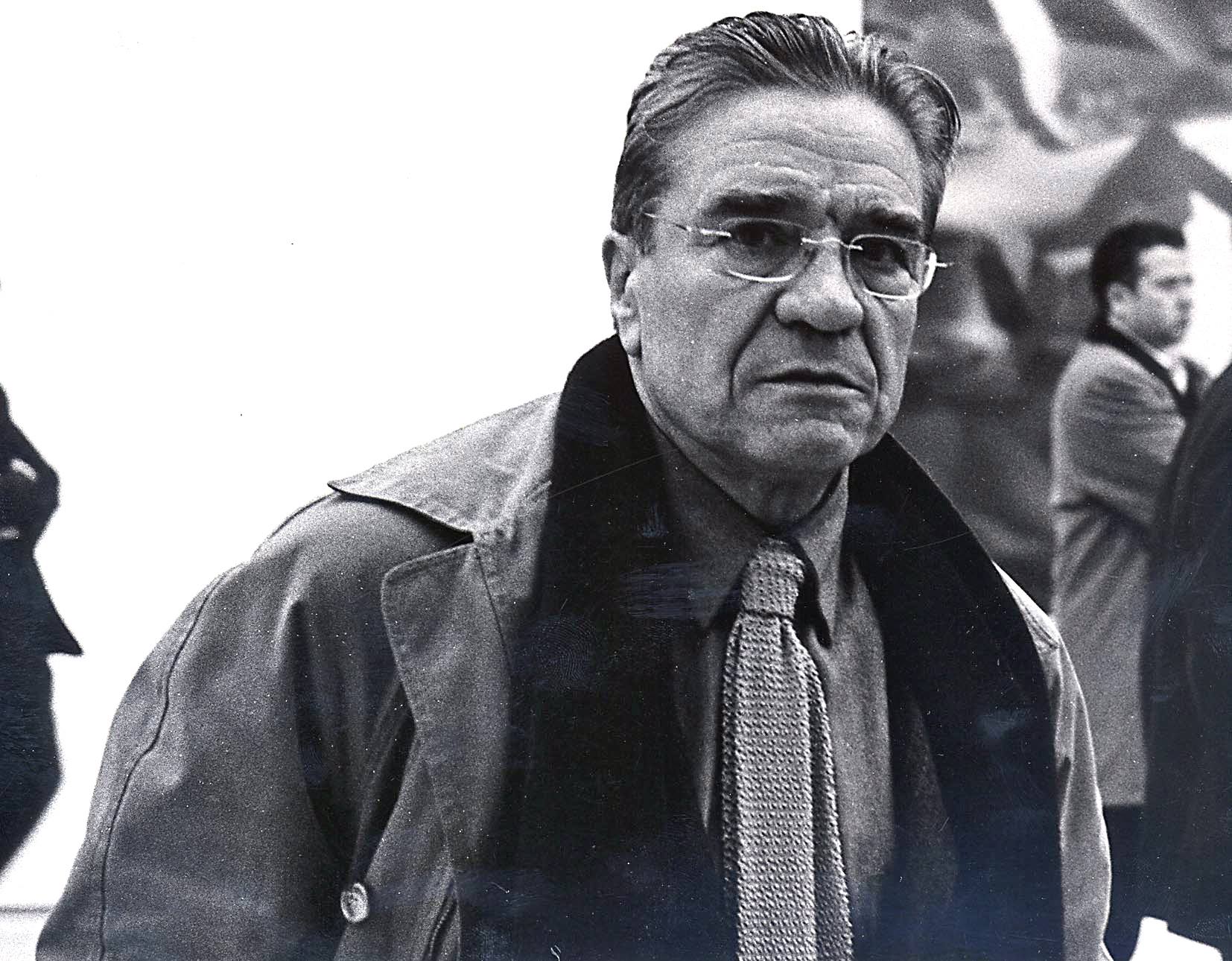
Norbert Tadeusz was a German artist and well-known representational painter of the present day.

Max Gubler was a Swiss artist.
He experimented with various contemporary styles, until developing his own personal vivid style of landscape painting on Lipari. Later he turned to abstraction, but continued to use bright colours. In 1956 he did a series of pastel illustrations for Ernest Hemingway's The Old Man and the Sea. In his late works, darker colours predominate.
His work was shown in many galleries.
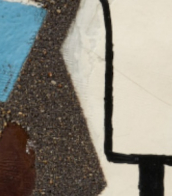
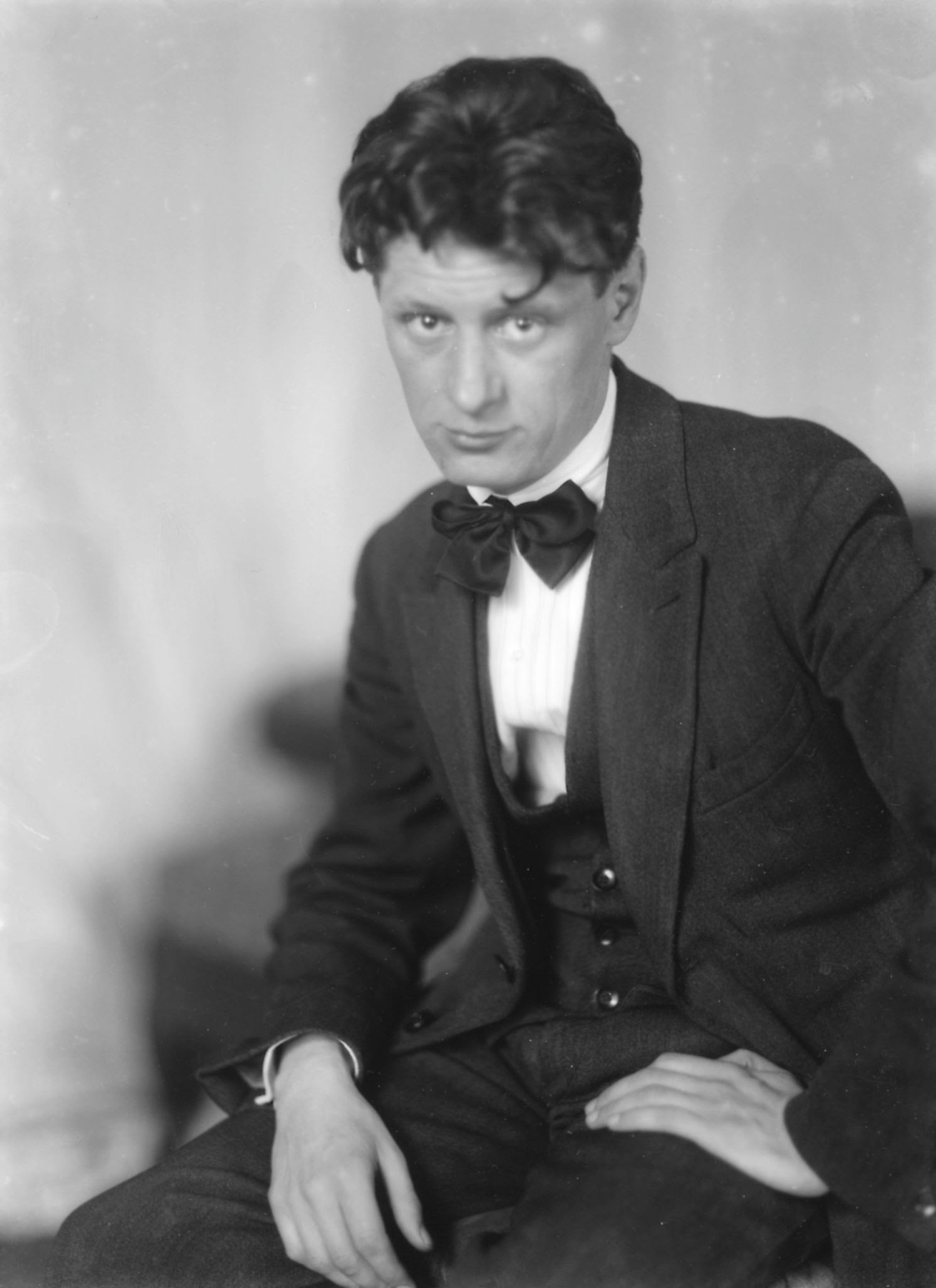
Josef Scharl is a German and American painter, illustrator, and graphic designer.
Scharl trained as a decorative painter at the Munich Art School, where he also gained practical experience in painting restoration. He was wounded in the war, and after returning to Munich, he continued his studies at the Kunstakademie. In the 1920s Josef Scharl joined the artist groups New Munich Secession and Juryfreien, successfully participated in their exhibitions, and later became acquainted with the Impressionists.
Writing in the New Objectivity style, Josef Scharl was forced to emigrate to the United States in 1939, and 1944-46 marked the peak of his fame in the United States. He was also commissioned by the publisher Pantheon Books to illustrate the Grimm brothers' fairy tales and other books.

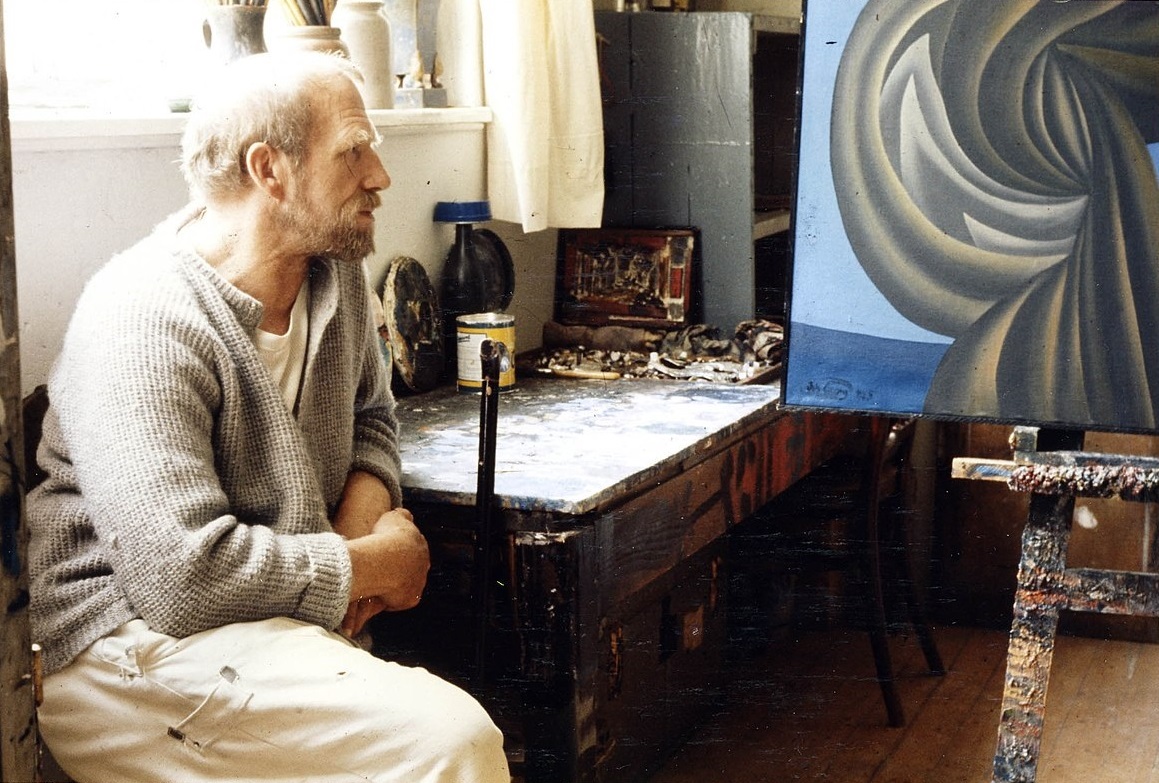
Johann Georg Müller was a German painter and graphic artist. He was studied at the Academy of Fine Arts in Munich.
Müller's work was heavily influenced by the Expressionist and Surrealist movements, and his paintings and graphic works often featured bold colors and abstract, dreamlike imagery. He was known for his use of symbolic motifs and his interest in mythological and religious themes.
During World War II, Müller was drafted into the German army and served on the Eastern Front. After the war, he returned to Munich and resumed his artistic career. He became a member of the German Expressionist group "Die Neue Gruppe" and participated in several exhibitions throughout Europe.
His work continues to be exhibited and studied around the world, and his legacy has had a significant impact on the development of modern and contemporary art in Germany and beyond.

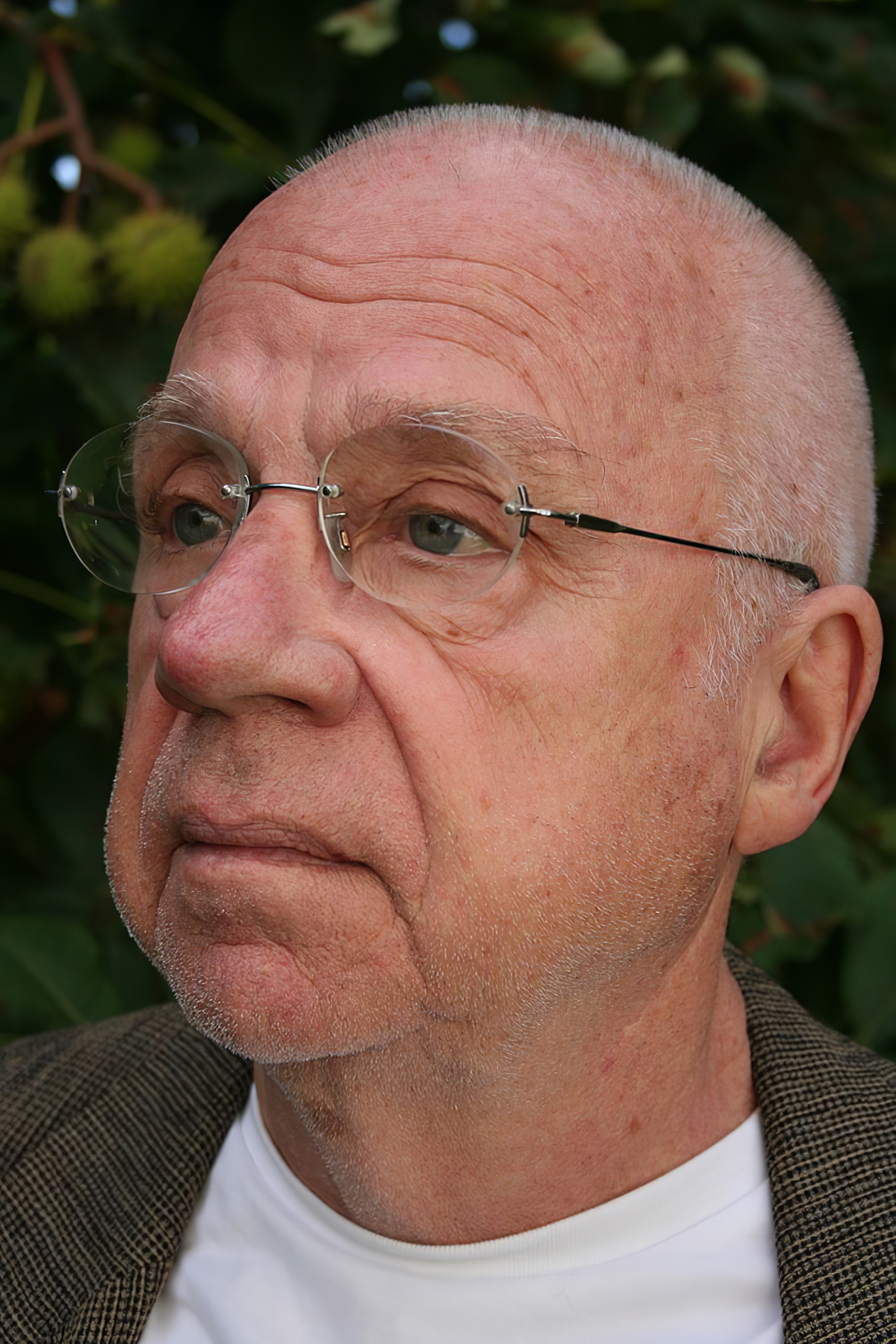
Peter Dreher was a German artist and academic teacher. He painted series of landscapes, interiors, flowers and skulls, beginning his series Tag um Tag guter Tag in 1974. As a professor of painting, he influenced artists including Anselm Kiefer. His works have been exhibited internationally.

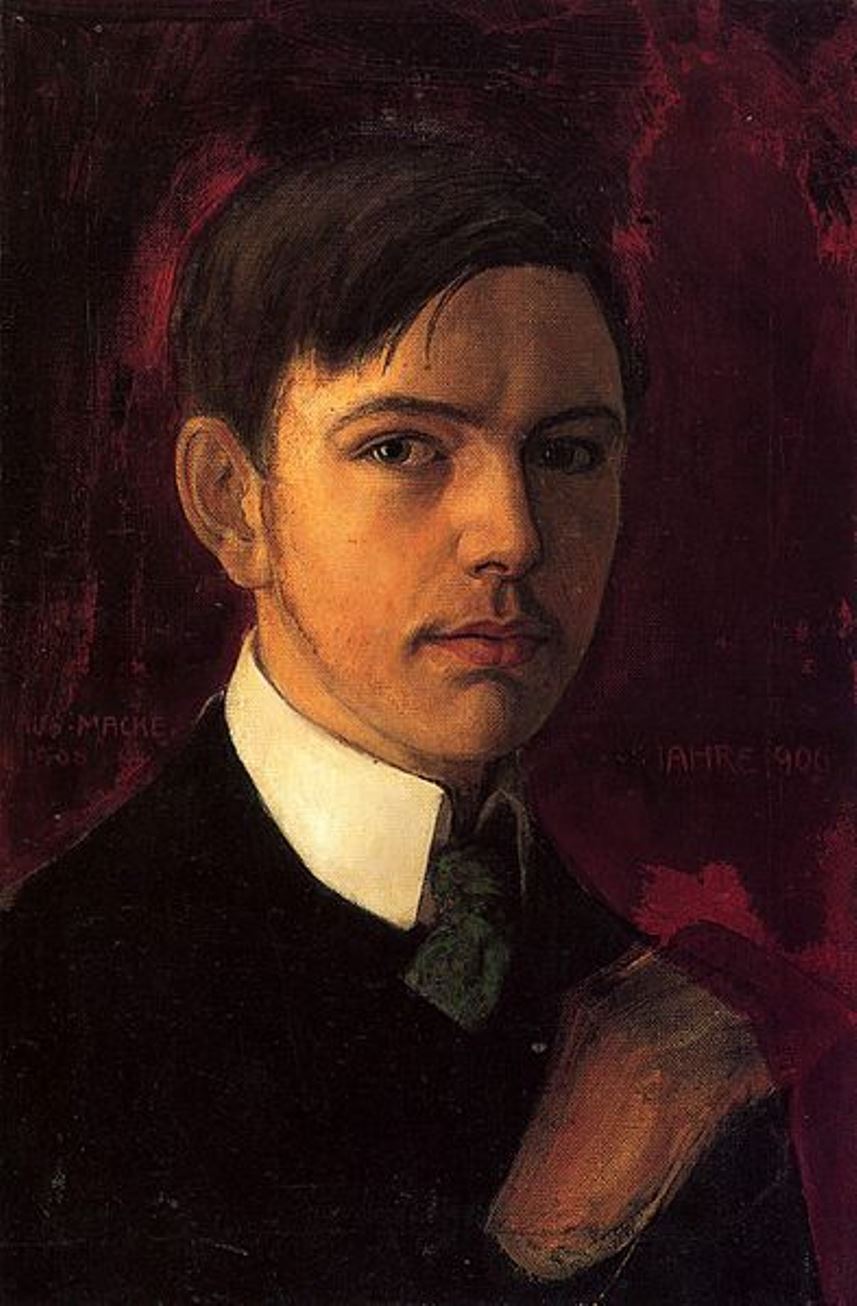
August Robert Ludwig Macke was an eminent German expressionist painter, founder and member of the Blue Rider association. His very colorful and individual style is today referred to as the Macke style, characterized by a harmonious combination of colors and the play of light effects. His favorite subjects of his works were sketches from the life of the city, as well as nature and man. The paintings of August Macke give an impression of joy and lightness.
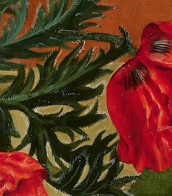
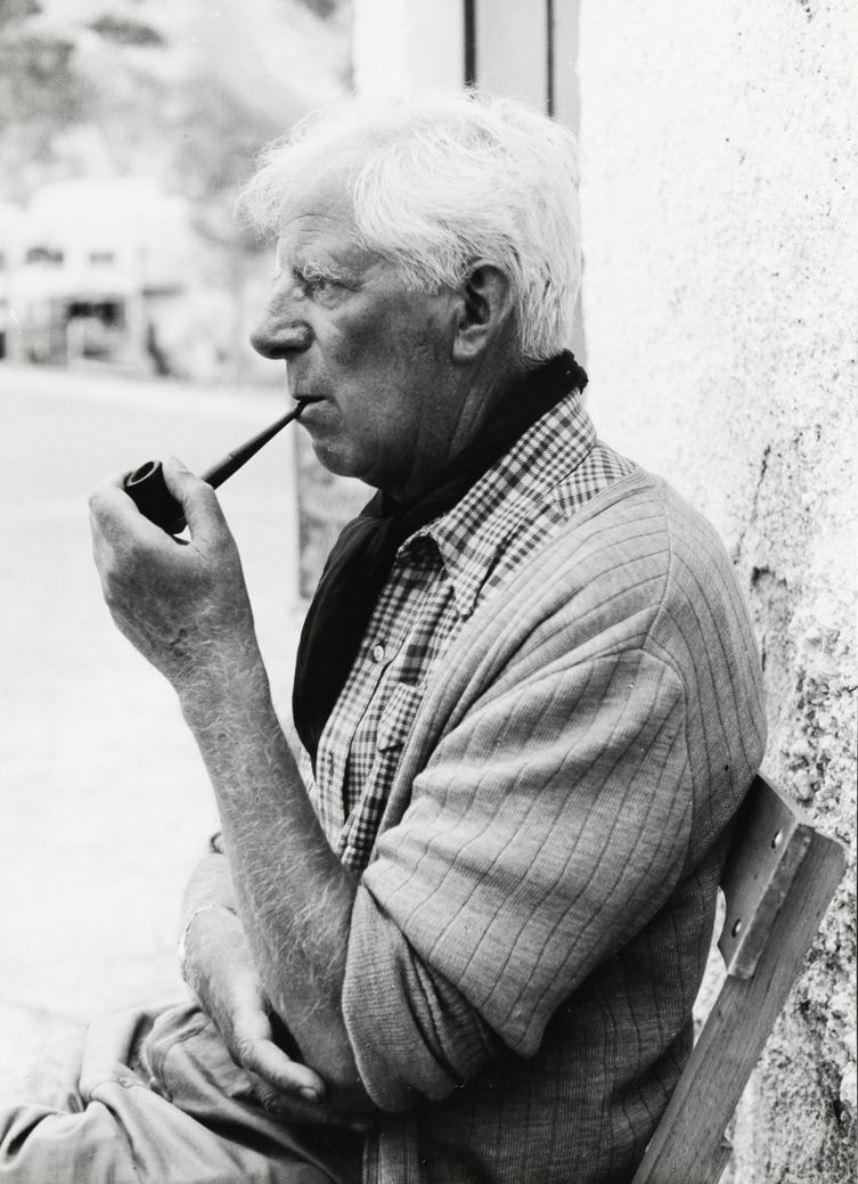
Werner Gilles was a German artist.
He was a member of the Bauhaus school of art and design. After arriving on the Italian island of Ischia in 1932, Gilles found inspiration for painting. In his oil paintings and watercolors, the artist depicts the cheerful and menacing aspects of this primitive landscape and captures its basic nature.
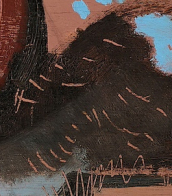
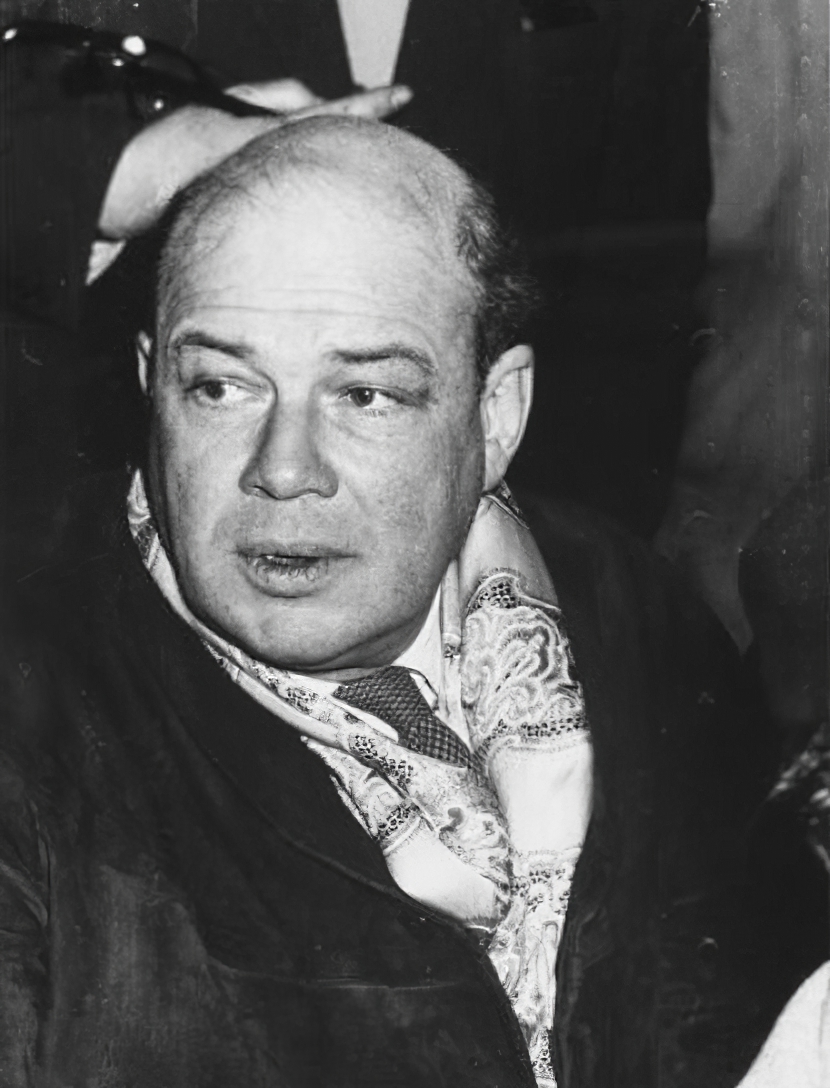
Peter Janssen, nicknamed Junior, real name Peter Tamme Weyert, was a German painter and teacher.

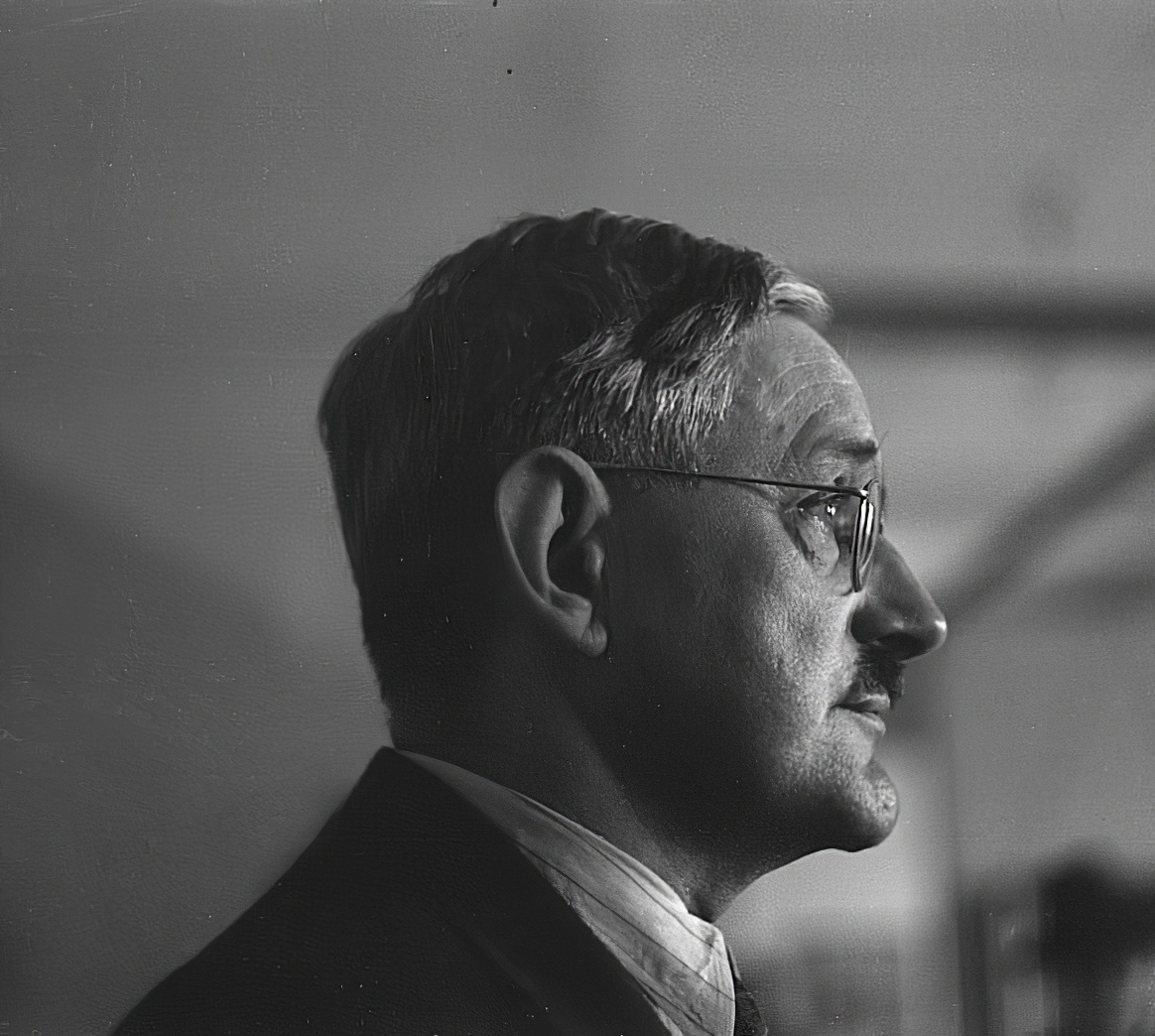
Conrad Felixmüller was a twentieth-century German artist, born Conrad Felix Müller. He is known as a painter, graphic artist, illustrator and printmaker, a representative of the New Materiality movement, who worked in the Expressionist style.
Felixmüller created about 2,500 paintings and graphic drawings, the main motif of which was the human being. The artist considered himself a socially critical expressionist, and his works reflected scenes from everyday life. In the 1930s, many of his works were confiscated by the Nazis as examples of degenerate art and destroyed. As a result of the bombing of Berlin in 1944, Felixmüller lost much of his work.

Robert Pudlich was a German graphic artist, painter, illustrator and set designer of the lost generation. His art was influenced by the New Objectivity. Pudlich belonged to the environment of the art dealer Johanna Ey. He was a member of the Rhenish Secession and the German Association of Artists. In 1936 he took part in the Nazi exhibition West Front in Essen. In 1937 his works were classified as degenerate art. After the Second World War, from 1947 Pudlich designed sets and costumes for productions by Gustaf Gründgens in Düsseldorf and Hamburg as well as for the Municipal Opera in Berlin. During this time he created a series of monumental murals, for example for the Düsseldorf Opera House. In 1955 he accepted a professorship at the Düsseldorf Art Academy.


Werner Gilles was a German artist.
He was a member of the Bauhaus school of art and design. After arriving on the Italian island of Ischia in 1932, Gilles found inspiration for painting. In his oil paintings and watercolors, the artist depicts the cheerful and menacing aspects of this primitive landscape and captures its basic nature.
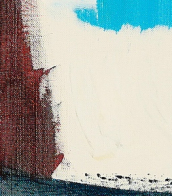

Peter Janssen, nicknamed Junior, real name Peter Tamme Weyert, was a German painter and teacher.


Conrad Felixmüller was a twentieth-century German artist, born Conrad Felix Müller. He is known as a painter, graphic artist, illustrator and printmaker, a representative of the New Materiality movement, who worked in the Expressionist style.
Felixmüller created about 2,500 paintings and graphic drawings, the main motif of which was the human being. The artist considered himself a socially critical expressionist, and his works reflected scenes from everyday life. In the 1930s, many of his works were confiscated by the Nazis as examples of degenerate art and destroyed. As a result of the bombing of Berlin in 1944, Felixmüller lost much of his work.

Robert Pudlich was a German graphic artist, painter, illustrator and set designer of the lost generation. His art was influenced by the New Objectivity. Pudlich belonged to the environment of the art dealer Johanna Ey. He was a member of the Rhenish Secession and the German Association of Artists. In 1936 he took part in the Nazi exhibition West Front in Essen. In 1937 his works were classified as degenerate art. After the Second World War, from 1947 Pudlich designed sets and costumes for productions by Gustaf Gründgens in Düsseldorf and Hamburg as well as for the Municipal Opera in Berlin. During this time he created a series of monumental murals, for example for the Düsseldorf Opera House. In 1955 he accepted a professorship at the Düsseldorf Art Academy.


Klaus Fußmann is a contemporary German painter. He studied from 1957 to 1961 at the Folkwang University of the Arts in Essen and from 1962 to 1966 at the Berlin University of the Arts. From 1974 to 2005, he was a professor at the Berlin University of the Arts. His work has won several awards, such as the Villa Romana prize in 1972 and the Art Award of Darmstadt in 1979. Major presentations of his work include exhibitions at the Neue Nationalgalerie in Berlin, 1972; the Mathildenhöhe in Darmstadt, 1982; the Kunsthalle Emden, 1988; the Kunsthalle Bremen, 1992; and the Museum Ostwall in Dortmund, 2003. In 2005 Fußmann completed a monumental ceiling painting in the Mirror Hall of the Museum für Kunst und Gewerbe Hamburg.
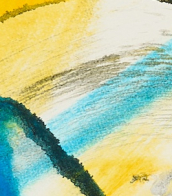
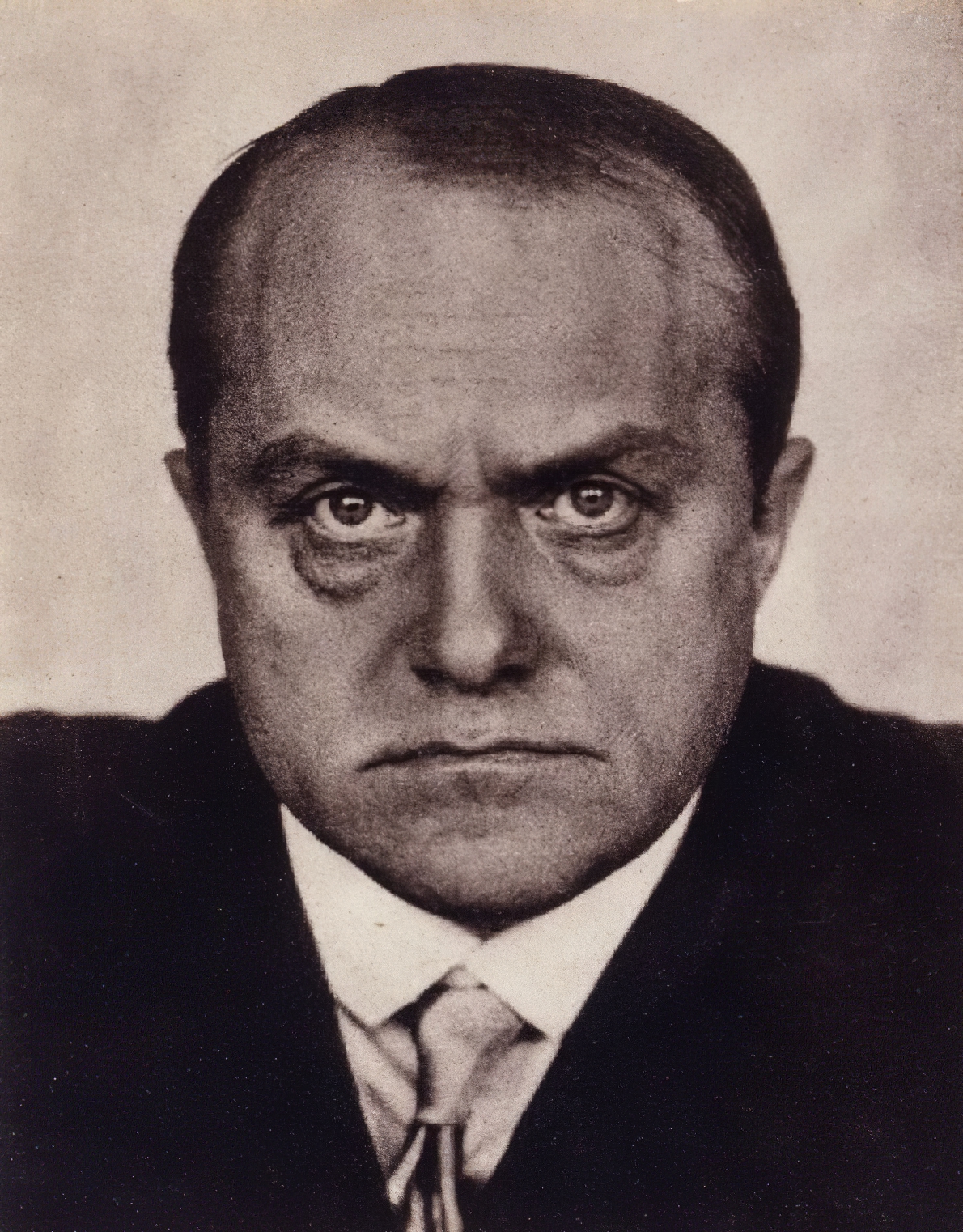
Max Beckmann, a German painter, printmaker, sculptor, and writer, stood out in the early 20th century for his profound contributions to modern art. Beckmann's career spanned a tumultuous period in history, deeply influencing his thematic and stylistic choices. Unlike many of his contemporaries who embraced non-representational painting, Max Beckmann persisted with and evolved the tradition of figurative painting, drawing inspiration from a wide array of artists spanning from Cézanne and Van Gogh to medieval masters like Bosch and Bruegel.
Max Beckmann's experiences, particularly those related to the World Wars, significantly shaped his work. Following Adolf Hitler's rise to power and the subsequent condemnation of modern art as "degenerate," Beckmann fled Germany, spending a decade in self-imposed exile in Amsterdam before eventually relocating to the United States. His art from this period, especially his large triptychs, is considered some of his most potent, offering a stark reflection on humanity and the chaos of the times.
One of Max Beckmann's most personally allegorical works, "Beginning" (1949), encapsulates his knack for blending real and imagined elements from his life to comment on the broader human condition. This piece, alongside others, underscores Beckmann's enduring fascination with the existential struggles modern society faces, teetering between desire and societal roles.
Max Beckmann's legacy is cemented not just by his unique approach to modernism but also by his influence on subsequent generations of artists, particularly in the United States, where he spent his final years teaching and working. Despite a path that often diverged from the mainstream narratives of art history, Beckmann's work continues to resonate, housed in prestigious institutions like The Museum of Modern Art and The Metropolitan Museum of Art in New York.
For collectors and experts in art and antiques, Max Beckmann's oeuvre offers a compelling exploration of 20th-century art and history. To stay informed about new discoveries, sales, and auction events related to Max Beckmann, consider signing up for updates. This subscription ensures access to the latest opportunities to engage with the work of one of modernism's most individual voices.
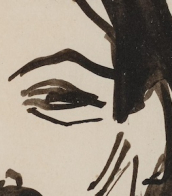

Peter Dreher was a German artist and academic teacher. He painted series of landscapes, interiors, flowers and skulls, beginning his series Tag um Tag guter Tag in 1974. As a professor of painting, he influenced artists including Anselm Kiefer. His works have been exhibited internationally.



